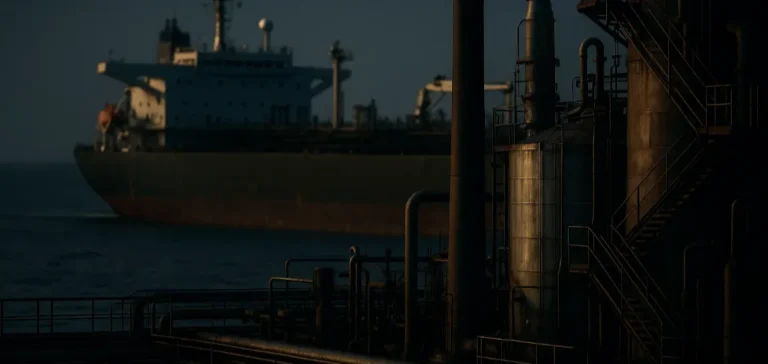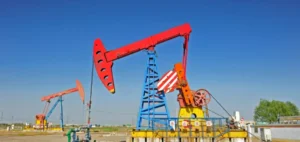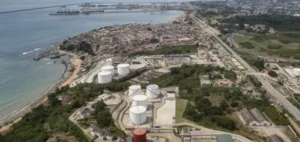Asian oil markets have undergone a profound structural transformation since 2022, fueled by the emergence of a parallel fleet of tankers transporting Russian crude outside traditional circuits. This reconfiguration of energy flows, now representing over 600 billion dollars in transactions since February 2022, is redefining regional balances and raising growing concerns about maritime safety. Japanese, South Korean and Taiwanese refiners are closely watching this evolution that directly affects their supply strategies and procurement costs. The Dubai price structure, benchmark for Middle Eastern crudes, established at an average of 3 dollars per barrel in backwardation in the third quarter, reflecting tensions in the physical market.
Alternative Payment Mechanisms Disrupt the Financial System
Oil transactions between Russia and its Asian buyers now operate through a complex system of alternative currencies, bypassing the US dollar. Indian payments for Russian oil are split between Chinese yuan for approximately 10%, UAE dirham and Indian rupee for the remainder. This financial architecture, progressively implemented since March 2022, generates significant operational frictions, with processing delays reaching up to 18 days for certain transactions. Russia accumulates significant rupee reserves that it struggles to use, given the trade imbalance with New Delhi, creating pressure to increase the share of payments in yuan, a more easily convertible currency on international markets.
Volumes transiting through these new channels reach record levels, with Indian imports of Russian oil valued at 52.73 billion dollars in 2024, while China imported 108.5 million tonnes over the same period. These massive flows have allowed Russia to maintain substantial oil revenues despite sanctions, generating approximately 580 billion dollars since the beginning of the Ukrainian conflict. The alternative payment system notably relies on the Chinese Cross-Border Interbank Payment System (CIPS), which now processes a growing share of Asian energy transactions, reducing dependence on the traditional SWIFT system.
The Refining Loophole Transforms India into a Re-export Hub
Indian refineries have developed a sophisticated economic model exploiting a major regulatory gap in the Western sanctions framework. The Jamnagar, Vadinar and New Mangalore complexes massively import discounted Russian crude, refine it, then export the finished products to Europe and the United States without technically violating sanctions. Indian exports of refined products to the European Union jumped 58% during the first three quarters of 2024, making India Europe’s top supplier of refined petroleum products. This dynamic represents 238,000 barrels per day of diesel and 81,000 barrels per day of aviation fuel exported to Europe, generating substantial margins for Indian refiners.
The Centre for Research on Energy and Clean Air estimates that one-third of Indian refined product exports to price cap countries comes from Russian oil, representing a value of 6.16 billion euros over thirteen months. This situation creates a notable economic asymmetry, with Indian refiners benefiting from estimated savings of 13 billion dollars on their crude imports since 2022, while selling refined products at international market prices. European authorities acknowledge this loophole but struggle to close it without disrupting their own refined product supplies, creating a complex political and economic dilemma.
An Aging Fleet Threatens Maritime Ecosystems
The Russian shadow fleet, estimated between 600 and 1400 vessels according to sources, poses growing environmental risks on major global shipping routes. The average age of these tankers reaches 18 to 20 years, with some vessels exceeding 30 years of operation, well beyond usual industry safety standards. The December 2024 disaster in the Black Sea, where two Russian tankers spilled 9,200 tonnes of mazut, contaminating over 60 kilometers of coastline and causing the death of thousands of birds, tragically illustrates these dangers. Traditional insurers refuse to cover these vessels, leaving room for Russian companies like Ingosstrakh and Alfastrakhovanie, whose financial capacity to cover major claims remains doubtful.
Baltic Sea traffic presents particularly acute risks, with a 70% increase in the number of Russian tankers passing along German coasts since 2021. These vessels regularly use evasion techniques including falsification of AIS (Automatic Identification System) signals, ship-to-ship transfers on the high seas and manipulation of origin documents. Estonian authorities have intercepted several suspicious vessels, including the tanker Eagle S suspected of damaging the Estlink 2 submarine power cable. The multiplication of incidents, with an average of two accidents per month involving shadow fleet tankers, raises growing concerns about coastal states’ ability to manage a major oil spill.
OPEC+ Dynamics Reconfigure Asian Supplies
The Organization of Petroleum Exporting Countries and its allies maintain production cuts totaling 5.86 million barrels per day, representing 5.7% of global demand, in a context where Saudi Arabia requires Brent prices at 81 dollars per barrel to balance its national budget. These restrictions, extended until the end of 2025 with a gradual increase planned from April 2025, create opportunities for Russian oil sold at substantial discounts. Asian refiners are actively diversifying their supply sources, with record imports of US WTI Midland crude in South Korea and the first significant purchases of Canadian oil via the Trans Mountain pipeline by ENEOS in Japan and GS Caltex in Korea.
Asian refining capacity continues its massive expansion, with China exceeding 19 million barrels per day in 2024 and India adding an additional 900,000 barrels per day in 2025. This structural overcapacity, combined with discounted Russian oil flows, transforms the region into a global refining hub, with major implications for refined product markets. New Chinese complexes like Yulong (400,000 barrels per day) focus on petrochemical production, while Indian expansions primarily target transportation fuels, reflecting divergences in the energy transition trajectories of the two Asian giants.
Western sanctions against Russian oil, initially designed to limit Moscow’s revenues while maintaining energy market stability, produce complex and sometimes contradictory effects. The 60 dollar per barrel price cap, meant to be the central control mechanism, proves largely ineffective with only 35% of Russian tankers still using Western insurance. Recent enforcement attempts, including US sanctions against 183 vessels in January 2025, temporarily disrupt flows but fail to sustainably stem trade. Asian refiners, particularly in India and China, have developed sophisticated commercial ecosystems allowing them to maintain, even increase, their Russian oil imports while technically respecting international regulatory frameworks. This situation raises fundamental questions about the effectiveness of energy sanctions in an interconnected global market and about the unintended consequences of these policies for global energy and environmental security.






















